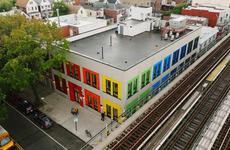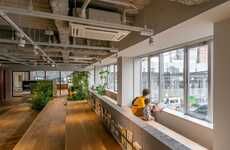
The Nest is a State-of-the-Art Preschool Center in Los Angeles
Elena Rahman — October 21, 2021 — Art & Design
References: perkinswill & design-milk
This state-of-the-art preschool center is a design-centric establishment boasting an indoor and outdoor educational area. Los Angeles-based studio Perkins&Will designed the center knowing that even tiny humans can appreciate an aesthetic environment. Dubbed the Nest, Perkins&Will's preschool was created in collaboration with Hope Stree Margolis Family Center, a community health, education, and recreation resource of Dignity Health.
The partners designed the center as a pro bono project. It is created for low-income families to provide invaluable early educational services in a vibrant, fun, and nurturing environment. The preschool champions play-based learning to help the kids feel comfortable and excited to be there. It is equipped with bright colors, modern and engaging toys, and a vibrantly decorated outdoor wall.
Image Credit: The Nest
The partners designed the center as a pro bono project. It is created for low-income families to provide invaluable early educational services in a vibrant, fun, and nurturing environment. The preschool champions play-based learning to help the kids feel comfortable and excited to be there. It is equipped with bright colors, modern and engaging toys, and a vibrantly decorated outdoor wall.
Image Credit: The Nest
Trend Themes
1. Design-centric Education - Demand is growing for education environments that prioritize design aesthetics to create an engaging and nurturing atmosphere for young learners.
2. Play-based Learning - Teaching through play is becoming a popular and effective approach to early childhood education, fostering creativity and curiosity in children.
3. Pro Bono Projects - Partnerships between design firms and non-profit organizations are creating opportunities for companies to give back to their communities through pro bono work.
Industry Implications
1. Early Childhood Education - Innovative preschools and early childhood education centers can gain a competitive edge by creating a stimulating, aesthetically pleasing environment for young learners.
2. Architecture and Design - Designers and architects can explore opportunities to bring a human-centered approach into the design of educational facilities and daycare centers, focusing on creating spaces that enhance learning and creativity.
3. Social and Community Services - Opportunities exist for non-profit organizations and community centers to partner with design firms and architects to create inviting, safe, and engaging environments that benefit low-income families and young children.
4.2
Score
Popularity
Activity
Freshness























